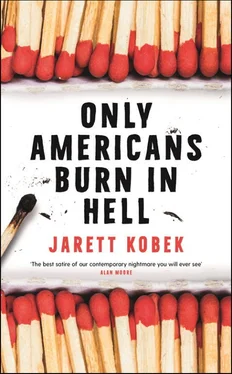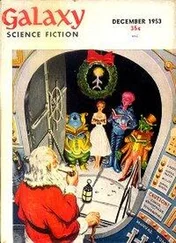That night, when Fern and Anthony engaged in some bad fictional sex, Anthony sobbed like an infant.
In the Year of the Mechanized Baptism, New York City played host to one of its storied events: the Whitney Biennial.
The Biennial was a display of artworks. It occurred every two years at the Whitney Museum of American Art.
Generally speaking, artworks were human-made abstract representations of three-dimensional reality.
Anthony wanted to go see a film by the Los Angeles-based artist William E. Jones.
The film was called Massillon and it was included in the 1993 AD Whitney Biennial. Amongst other things, the film was about Jones growing up mega-homosexual in post-industrial Ohio.
“Before we see the film,” Anthony said to Fern, “we should check out the show. The whole thing costs six bucks.”
Everyone who’d come into contact with the energy field residing in Anthony’s body believed that Fern spent most of her time painting. Anthony himself believed this.
When Anthony extended the invitation, Fern couldn’t say no.
The Whitney Biennial was a professional obligation.
They walked uptown to the Biennial, which was housed in the Whitney Museum at the corner of 75th & Madison.
On the way, Anthony and Fern found themselves trapped in an unpleasant discussion.
The topic of this unpleasant discussion was familiar.
It was a reliable source of discord.
This was the topic: Fern’s unwillingness to discuss her past.
Anthony was deeply suspicious that Fern was hiding vital information.
Which, of course, she was.
But Anthony’s body was awash in huge amounts of testosterone and primal magic.
He could not imagine the information that Fern was hiding.
No one could!
Anthony’s body had funneled his suspicion into some serious masculine bullshit. He was fixated on Fern’s sexual history prior to the advent of their rutting congress.
He was convinced that she had a long history of shameful encounters.
From a certain perspective, this was true: Fern had more than her fair share of Fairy Land relationships, and she’d been visiting the mortal world since the Fourteenth Century AD.
But Anthony’s thoughts were more pedestrian.
He was consumed with fleeting images of suburban fingerbanging, semen-smeared threesomes, and an excess of New York City blowjobs.
Don’t forget: he was from Long Island.
“I just want to know the truth!” he shouted. “I can handle it!”
Even in the best of times, the Biennial was notorious for producing a high level of annoyance.
Everyone who visited an iteration of the Biennial left the Whitney Museum and complained about how the abstract representations of three-dimensional reality in the Biennial were the wrong abstract representations of three-dimensional reality to be displayed in a space dedicated to abstract representations of three-dimensional reality.
Unlike previous Biennials, the 1993 AD iteration had overthrown the tyranny of certain kinds of abstract representations of three-dimensional reality and replaced them with different abstract representations of three-dimensional reality.
The 1993 AD show was conceived and executed to engage with voices marginalized from the mainstream of the art world and American culture. It included people descended from the indigenous tribes of the Americas, and people descended from people brought in chains to support America’s original economic scheme, and people exploring the subjugation of women.
And because it was the Year of the Mechanized Baptism, the Biennial occurred before the American capitalist class realized the inherent profitability in men who had sex with other men.
So the Biennial also included mega-homosexuals like William E. Jones.
Back in those days, William E. Jones was an excluded voice.
Now he’s a faithful viewer of Reality TV!
RuPaul’s Drag Race !
Things change!
Capitalism can eat anything!
The 1993 AD Biennial presented two particularly controversial representations of three-dimensional reality.
The first was a video of the Rodney King assault, which was shot by a plumber and depicted the Los Angeles Police Department beating the shit out of a motorist descended from people brought in chains to support America’s original economic scheme.
The second were the admissions badges, which everyone had to wear if they didn’t want to be kicked out of the Whitney Museum.
The badges were designed by the artist Daniel Joseph Martinez and spelled out various iterations of the following phrase: I CAN’T IMAGINE EVER WANTING TO BE WHITE.
Everyone freaked out.
They freaked out so hard that they created a physical, and conceptual, environment of malice and paranoia.
If you think this is an exaggeration, reader, then I recommend that you read contemporary reviews of the 1993 AD Whitney Biennial. If you can find anything more positive than qualified sneering and affronted guilt, then you are a much better researcher than me.
And remember: the qualified sneering and affronted guilt came from people who were sympathetic to the show.
Fern and Anthony paid their collective $12 and were given admissions badges.
Fern’s admissions badge said: EVER WANTING.
Anthony’s admissions badge said: IMAGINE.
They wandered through the rooms and galleries of the Whitney Museum, bombarded by abstract representations of three-dimensional reality.
When Fern and Anthony arrived at the Cindy Sherman photographs of mannequins and exaggerated plastic genitalia and reproductive organs and BDSM masks, Anthony looked into Cindy Sherman’s abstract representations of three-dimensional reality.
And Cindy Sherman’s abstract representations of three-dimensional reality looked into Anthony.
“Here we find the nature of knowledge,” said Anthony.
“What?” asked Fern.
“We can’t know anything that isn’t first filtered through our senses. There is no knowledge beyond that which is observed. There is no first truth. Sherman is presenting us with a moral lesson on instructive epistemology. This is the real nature of sex. This is the desire of all men. It may arrive disguised, but this is what happened when you allowed yourself to be fucked by beasts. The constructed nature of sex, informed by the media, informed by society, informed by ten thousand years of patriarchal society. Cindy Sherman has stripped it away. Now you can see them how they saw you. This is the truth of letting yourself be fingerbanged by animals.”
For centuries, people had been dragging Fern to exhibitions of abstract representation of three-dimensional reality.
She’d been stuffed full of the nonsense that people said in salons, in museums, and in galleries. She’d suffered through endless men talking about abstract representations of three-dimensional reality.
And Fern was nobody’s fool.
She hadn’t endured these exercises in tedium and learned nothing.
She had cottoned on to the underlying, and unjustifiable, delusion that animated every one of these discussions: the religious belief that art, rather than money, was the most influential thing imagined by human beings.
And here was the only person with whom she’d ever fallen in love and he was condescending to her with an even older bullshit than discussions about abstract depictions of three-dimensional reality, and he was disguising it as bullshit about abstract depictions of three-dimensional reality.
Fern cast another spell on Anthony.
Right there in the Whitney Museum.
Right there in the Biennial.
It was one of the weirdest spells cast by anyone from Fairy Land.
The underlying nature of art was the ability of human beings to perceive an implied whole from the presentation of its parts.
Читать дальше









![Brian Thompson - A Monkey Among Crocodiles - The Life, Loves and Lawsuits of Mrs Georgina Weldon – a disastrous Victorian [Text only]](/books/704922/brian-thompson-a-monkey-among-crocodiles-the-life-thumb.webp)


